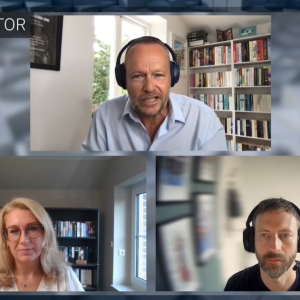Leading digital watermark company Digimarc Corp has garnered its first major success with Adobe Systems Inc agreeing to build the technology into PhotoShop and providing copyright information and an on-line link to the creator (CI No 2,994). Retaining artistic rights in the future – whether picture, video or audio – promises to dog any creator looking at the Internet as a distribution medium – the legal situation is currently a mess according to legal sources – when the very nature of digital work means that it can be copied, altered invisibly and distributed in the millions. Portland, Oregon-based Digimarc’s embedding software adds a random ‘noise’ into the file – less in flat color areas; more where there is detail – and prints a unique code into it. Detection software, such as that now licensed by Adobe, which is available free from Digimarc before the year is out – finds this low-level randomness and extracts the code. When the picture is read as a file or scanned, by PhotoShop for instance, a copy-right symbol is displayed with the file name with the identifier and a marker to say whether the image is restricted or royalty-free. And selecting a ‘Web look-up’ feature logs the user onto the Internet and shows the creator ‘s details held on-site by Digimarc.
Noisy connections
Digimarc claims to have learned from its network software peers how to avoid corruption of the identifier when an image is manipulated. Networking technology strives to avoid noisy connections, said Digimarc’s director of business development Scott Carr. Our position is that a noisy environment is what you do to a picture. Creators pay a flat $150 a year to be on Digimarc’s database – a price tag Carr claims those interviewed barely batted an eye at – and database queries are free. The cost could almost be justified as an advertising medium. Standards in this area are likely to force themselves in de facto, as major players accept or reject technologies. While Adobe is arguably the heaviest weight in digital imaging, other giants such as Eastman Kodak Co are neither confirming nor denying participation given the amount of work they already have behind their own closed doors. Monitoring bodies for the system don’t exist as such, but lobby firm The Wexler Group is pushing for acceptance of the Digimarc as a legal standard. While US politicians have put this issue to one side until after the election, it is certain to force changes internationally as companies and individuals explore the new gap between piracy and Web free dom. Tracking the use of images is not the domain of Digimarc, said Carr. We’re not a monitoring system, but this is the first step towards establishing a way for the creator to communicate with the consumer. And the possibilities once that is achieved are as many as people will be prepared to pay for, notably building payment facilities into software once electronic commerce is reliably achieved. Carr admitted copyright legislators such as the Library of Congress might send software agents on-line, logging whose works are being used and where, although libertarians need not worry too much, according to Grant Anderson, an information lawyer for the Media & Technology group at Denton International Group: on the question of enforcement, it is not always worth going after [violators]. Carr also accepted the potential of breaking the codes and implanting a bogus one, but that is the region of the thief, and a clear breach of the law, as contrasted with the uncertain winds blowing the Internet today. While copyright protection systems such as this or MOR Ltd’s visual decoding used in the SmartAlex filter (CI No 2,967) are a big step forward, Anderson noted that other issues than technology still face the politicians – countries whose avoidance of international agreements are notorious; possible privacy concerns; and the gap between legal commercial use and curiosity. Indeed, any resolution will have to weigh up with the spirit of the Internet, where few people think of copying images and sounds they find as piracy. But as one observer noted, Who cares if they don’t think of it as piracy – it is!






